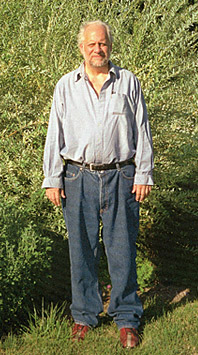The ultimate stimulus plan is here. Here is a process that is simple, comprehensive, wide-ranging. It illuminates what has been obscure, catalyses dormant energies, reveals new and splendid possibilities.
Welcome to spring. Let us escape the dank, dark recesses of the recent past, propel ourselves into the light and bask in its revivifying dazzle. Let’s take advantage of the fresh, brighter light to look about us, and into the months ahead.
Spring is the ultimate change-agent, transforming our landscape, our climate, our lifestyle and our moods. It is a cause with multiple and marvelous effects, micro to macro.
Every culture has retained symbols, rituals and customs inspired by spring—such a crowd of them that we lose sight of their original, deeper and richer significance. Spring’s power to renew, refresh and nourish is symbolized by the Easter bunny, the basket of multicolored eggs, art and literature, religious holy days and pagan rites.
With the Easter Bunny’s permission, I’d like to explore the season of which he is such an able mascot, and briefly extricate it from its panoply of iconography and ritual. Besides, I doubt the Easter Bunny would be an effective advocate of my model stimulus plan.
In paintings, the seasons are portrayed as women, hands enlaced, dancing in a circle. I’m not sure how this works in practice, as each season moves to a different tempo. Summer is a calypso, autumn a waltz, and winter a somnolent dance—a tableau vivant without the vivant. Spring, as everybody knows, blithely scampers in and out of view, a green capering blur.
Henry David Thoreau wrote, “I would consider it occupation to observe the passing of the seasons.” A commendable notion, but he would do better to participate in the passing of the seasons. They are highly interactive environments.
As modern, wired creatures, we are, most of us, just a few generations from our agricultural roots. Our ancestors worked the soil, sowing, growing, harvesting. Their calendar was comprised of seasons—which originally meant “sowing time”—and the rhythm of the seasons was the rhythm of their lives.
Our present sense of time is an artificial, manmade innovation. Until the mid-1800s, the United States had no time zones. Each town maintained its own time, calibrated to sunrise and sunset. Only with the advent of the railroad, mighty colossus of the industrial revolution, was time segmented into a master plan, the better to schedule trains by. Now, in the age of the computer, our pace of life has outpaced, if not sanity, civility. We have hopped aboard a treadmill moving at a faster rate than we can sustain. Time is no longer local and configured to us, but alien, and congenial only to the microchip.
The source of our current financial travails is all too human in origin. It was man’s ingenuity that created financial instruments whose implications and consequences were unforeseen by their creators, buyers or the marketplace at large.
These works of financial wizardry are the result of cold-blooded, mechanistic thinking—not so different from Stalin’s vision of the individual as a “screw in the machine.” A cold-blooded effort to “squeeze value” from assets whose underlying value is predicated on people—nature, that is—is just the sort of market fallacy that arrives with grandiose shifts in technology and markets. Like manmade time zones, these deals are arbitrary and unnatural, their collapse inevitable. However, let’s examine the shift of the cosmos and, like the ancients, see what we might learn from it.
As a plant grower, I see spring in shades of green. The life of plants, to me, provides an excellent model of how to revivify our ailing economy.
Spring’s stimulus plan works as follows. The earth, in its elliptical cycle, pivots so that the northern hemisphere tilts increasingly towards the sun. Winter solstice, in December, marks the time when the light from the north is at its lowest ebb in our hemisphere, the light gradually increasing and days lengthening until Summer Solstice in June when the light reaches its apex. The Vernal Equinox in March marks the midpoint, and the arrival of that extraordinary thing we call spring.
Spring each year is no less than a revelation, revealing energies and possibilities that have lain dormant in the winter. The rising and ever-brightening light has astonishing effects on plant, animal and human life.
The light reaches into the earth, signaling to dormant seeds that there are openings in the canopy conducive to growth—upward mobility, so to speak. The seeds’ sensory machinery allows them to know of disturbances to the topsoil from the stir of rain and seeping water. The seeds’ underground slumber enhances their sensitivity to the light’s arrival, and dramatically increases their ability to germinate.
Spring’s longer days catalyses a protein called CONSTANS, triggering a change reaction that results in flowering. It is offset by yet another protein–known to its friends as FKF–that regulates flowering.
As the plants emerge from the ground, they become eager partakers of the some 1,017 joules of solar energy that bathe the earth each second. Plants harvest up to 95 percent of the energy from the light they absorb. Sunlight morphs into carbohydrates in one million billionths of a second, making sure that the solar energy isn’t dissipated as heat. To achieve this nearly perfect efficiency, plants use a kind of quantum computing, to transfer energy from molecule to molecule in a wavelike motion to achieve photosynthesis.
Light triggers this process that makes life on earth possible, giving nourishment to animals, humans, insects and all manner of microscopic creatures.
Since our current economic crisis and recent winter of discontent have been entirely manmade, I propose we learn from the cosmos, spring in particular. It has much to teach us, if we will only look.
